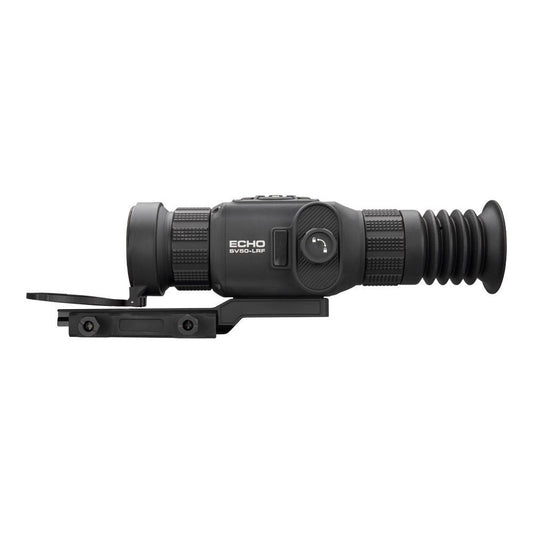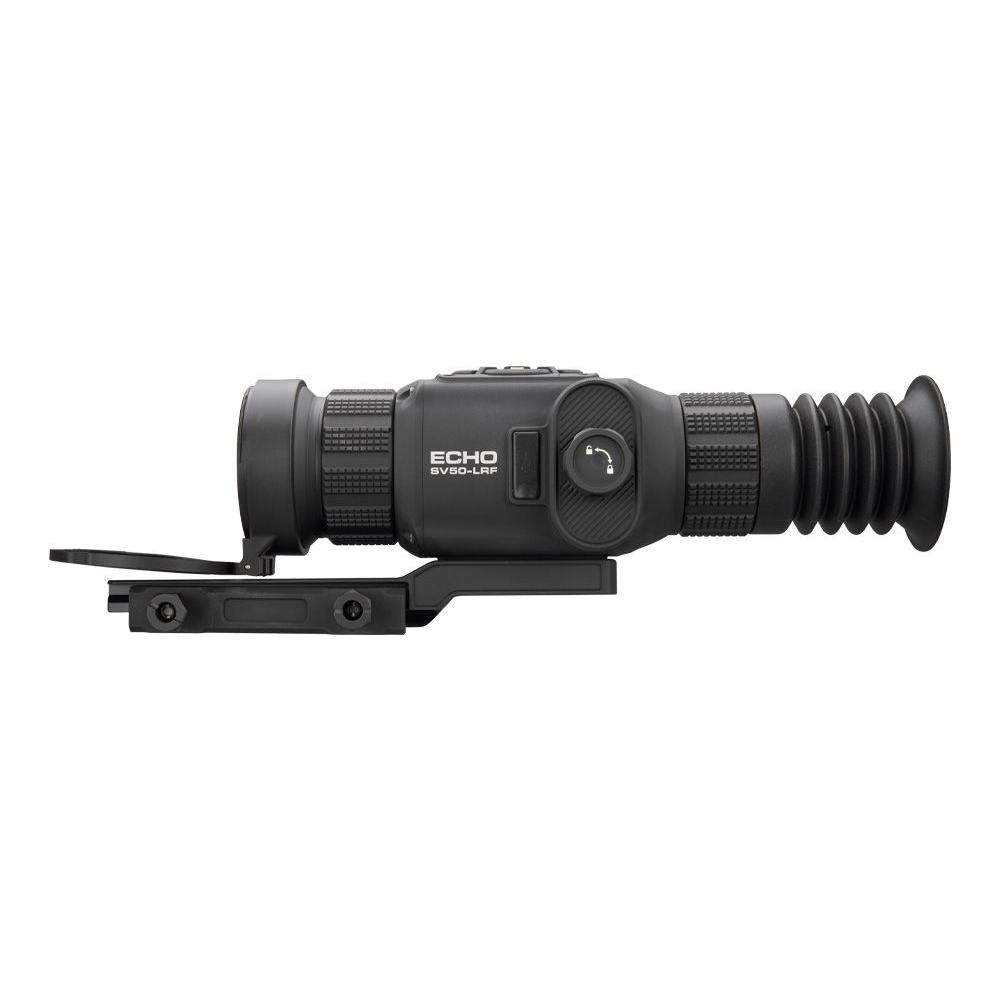

Sig Sauer Echo SV50-LRF Thermal Sight 2-16x50mm BDX 2.0 Black offers precise targeting with its integrated laser rangefinder, capable of measuring distances up to 1000 yards. This thermal sight utilizes a LWIR 640x512 VGA 12um 50Hz thermal core, providing exceptional detail detection with a sensitivity of ≤20mK. Designed for low-light conditions, it ensures that users can spot targets in various environments, making it ideal for hunting and tactical applications. The rechargeable 18650 lithium-ion battery supports an impressive 11-hour runtime, allowing for extended use without frequent recharging.
Featuring HD recording capabilities, the Echo SV lets you capture still photos and videos, enhancing your scouting and hunting experience. A user-friendly app simplifies configuration and media management, putting all necessary functions at your fingertips. Its lightweight design ensures easy mounting on rifles, and the cantilevered Picatinny rail compatibility allows for versatile setups, making it suitable for various shooting scenarios.
Features:
- SUPERIOR VISIBILITY for enhanced clarity in low-light conditions.
- INTEGRATED RANGEFINDER allows for precision shooting up to 1000 yards.
- ADVANCED THERMAL CORE features ≤20mK sensitivity for exceptional detail detection.
- HD RECORDING CAPABILITIES to capture still photos and videos with audio.
- LONG BATTERY LIFE with 11-hour runtime for extended shooting sessions.
- USER-FRIENDLY APP for easy configuration and media management.
- LIGHTWEIGHT DESIGN ensures effortless mounting and portability.
- COMPATIBLE MOUNTING SYSTEM with cantilevered Picatinny rail for versatile setups.
Technical Specifications Table
| Specification | Details |
|---|---|
| Magnification | 2-16x |
| Lens Diameter | 50mm |
| Weight | 1.8 lbs |
| Dimensions | 12.5" x 3.5" x 3.0" |
| Material | Aircraft-grade aluminum |
What’s in the Box?
- Sig Sauer Echo SV50-LRF Thermal Sight
- Lens covers
- Padded carrying case
- Rechargeable 18650 lithium-ion battery
- User manual
Customer Reviews
"The Echo SV has revolutionized my night hunting. It's incredibly easy to use!" - Jamie L.
"I love the integrated rangefinder! It makes everything so much simpler." - Alex R.
FAQ
How does the ECHO thermal sight perform in various weather conditions? The ECHO is designed to operate effectively in a range of environments, including rain, fog, and cold temperatures, ensuring reliable performance when it matters most.
Can I compare the ECHO with other thermal sights? The ECHO SV stands out for its seamless integration of user-friendly technology and superior optics, making it a top choice for both serious hunters and recreational shooters.
Similar Models
Looking for more exceptional optics? Explore our extensive Sig Sauer lineup, including models like the Sig Sauer Kilo 2400 ABS Rangefinder for superior range-finding capabilities and the Sig Sauer Tango6 Rifle Scope for unparalleled accuracy. Discover our full collection to find the perfect optics tailored to your needs.
You May Also Like
Here’s some of our most similar products people are buying. Click to discover trending style.






